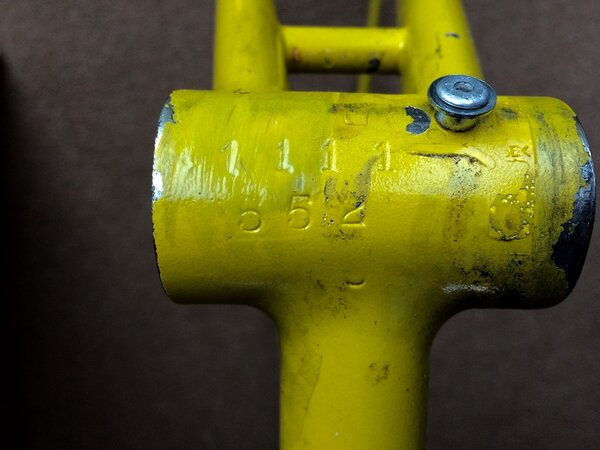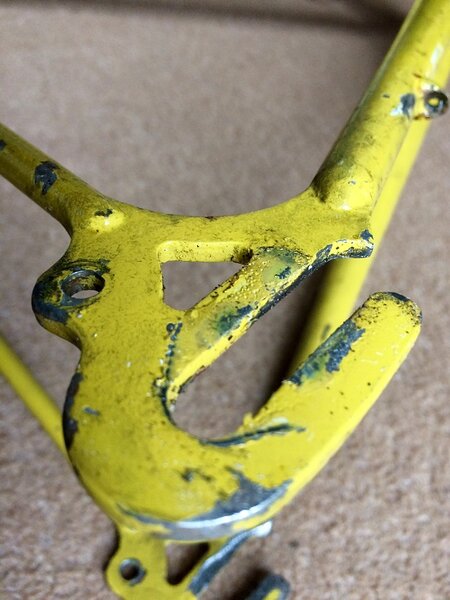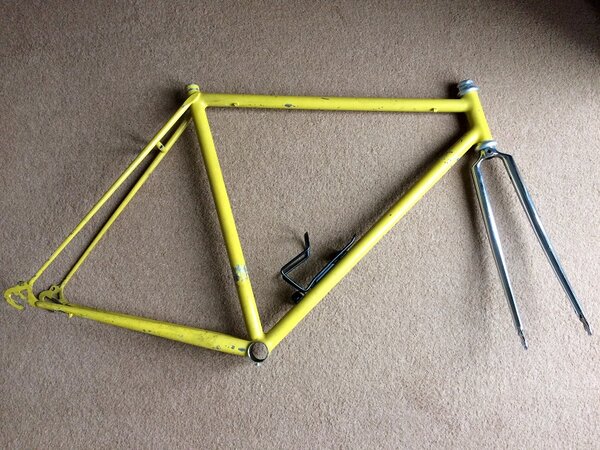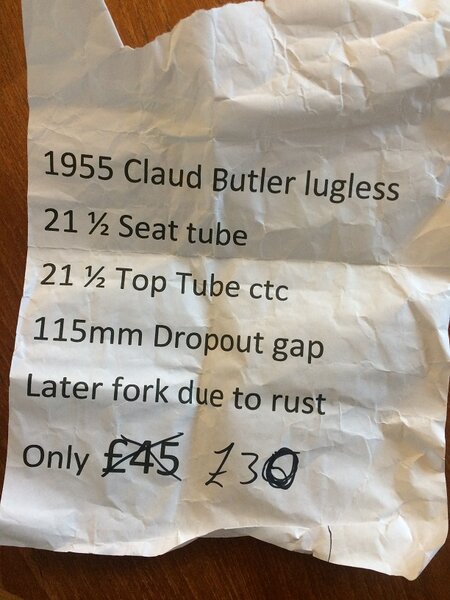Cyclechick
Retro Newbie
Hi everyone,
I recently acquired a Claud Butler frame at a bike jumble which will be my first build. Fortunately my partner is quite knowledgeable in this area but we are struggling to identify the model. We were told it was 1955 but having trawled the catalogues etc on http://www.nkilgariff.com/ClaudButler.htm I think it might be slightly earlier. My suspicions are that it could be an International Club or Super Arrow but I'm not 100% sure. It is a lugless frame and had no original components (even the forks had been replaced). It looks like the (quite rare I understand) rear drop outs have been removed as the edges are sharp and unfortunately a bottle cage had been pot riveted into the frame (which we have since removed) and the paint covers up any evidence of pump clips etc which we think might be the missing piece of evidence... We are hoping to strip back some of the paint to check but I wondered if there were any experts out there who might be able to help shed any light on this one? The serial number on the BB (1111 552)also doesn't seem to match anything that I've found online re CB frames. Happy to be corrected that it's another manufacturer if necessary, although we're quite confident it's a CB.
Thanks!
I recently acquired a Claud Butler frame at a bike jumble which will be my first build. Fortunately my partner is quite knowledgeable in this area but we are struggling to identify the model. We were told it was 1955 but having trawled the catalogues etc on http://www.nkilgariff.com/ClaudButler.htm I think it might be slightly earlier. My suspicions are that it could be an International Club or Super Arrow but I'm not 100% sure. It is a lugless frame and had no original components (even the forks had been replaced). It looks like the (quite rare I understand) rear drop outs have been removed as the edges are sharp and unfortunately a bottle cage had been pot riveted into the frame (which we have since removed) and the paint covers up any evidence of pump clips etc which we think might be the missing piece of evidence... We are hoping to strip back some of the paint to check but I wondered if there were any experts out there who might be able to help shed any light on this one? The serial number on the BB (1111 552)also doesn't seem to match anything that I've found online re CB frames. Happy to be corrected that it's another manufacturer if necessary, although we're quite confident it's a CB.
Thanks!



